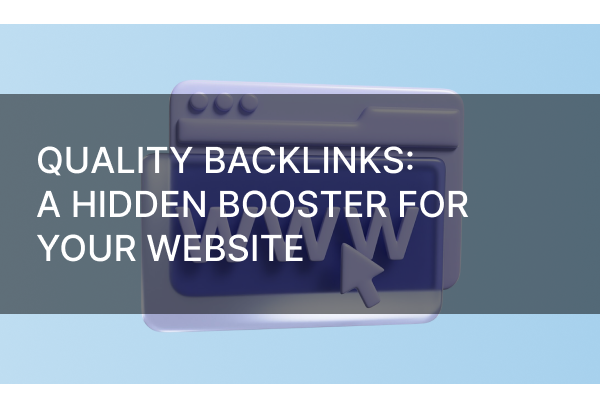Online marketing involves a wide range of methods and tools designed to draw attention to your brand and boost sales. While many marketers concentrate on promotions, advertisements, and sales tactics, they often overlook one crucial element that significantly influences both online success and advertising efficiency: your website. It’s the tool that shapes your image, builds trust, and serves as the core of your brand in the digital space. Let’s talk about websites.
The Role of a Website in Marketing Strategy
Maintaining an up-to-date website with modern visuals, solid technical performance, and relevant content has a profound impact on your brand. Your website is essentially your digital storefront—the face of your business that greets potential customers, guides them, and communicates your values and goals. It’s the destination where all your promotional links lead, where sales happen, and where customers return for more.
From shaping first impressions and educating visitors about your products to facilitating purchases and building trust, your website plays a critical role in marketing. In short, a professional, engaging website is essential to developing a trusted and recognizable global brand.
Benefits of a Relevant Website
Investing time and effort into your website brings many advantages, including but not limited to:
- Global reach;
- 24/7 customer availability;
- Increased brand trust;
- Enhanced company image;
- Broader data collection capabilities;
- Lead generation from search engines and other traffic sources;
- A central showcase for your products and services;
- Full control over site content;
- Seamless integration of calls-to-action (CTAs);
- A more comfortable and supportive user experience;
- Growth of organic, direct traffic.
How Do People Find You Online
Even if your website is compelling, engaging, and full of relevant information about your brand and products, none of that will have the desired effect unless it’s seen and visited by potential and existing customers. To ensure that your online platform gets the attention it deserves, you first need to understand how people find you—and where improvements can be made.
PPC
PPC (Pay-Per-Click) advertisements are one of the most popular and cost-efficient ways to drive traffic. This traffic source generally refers to all online ads your business publishes. While not every ad brings customers directly to your website, many users visit it afterward to learn more about your brand, products, or services. That’s why it’s important not only for your ads to look good and communicate the right message but also for your website to reinforce that impression. Visitors who arrive via ads and have a positive experience are more likely to return and become repeat customers.
Referral Links
Referral links—or backlinks—are links to your website placed on other platforms across the internet. These may be added by you as part of promotional efforts or partnerships, or by regular users in blog posts, comments, or online discussions. This type of traffic is valuable because of its social aspect—people tend to trust and share experiences with others. When satisfied customers promote your brand voluntarily, it adds credibility and reach.
SEO
To ensure high visibility and long-term success, your website must appear in search engine results related to your offerings. The top results usually get the most clicks. Appearing at the top builds user trust and works as passive advertising—even if the user doesn’t click your site, they’ll begin to recognize your brand.
Search engine optimization (SEO) enhances visibility and drives organic traffic over time. It involves not only optimizing your website’s content but also improving its structure and earning backlinks from reputable sites in your niche.
Direct Traffic
Direct traffic refers to visitors who arrive at your site without clicking an ad or external link. This traffic typically comes from previous customers, business partners, or competitors familiar with your brand.
The most valuable part of direct traffic is loyal customers—people who return because they’ve had a positive experience. Retaining their attention means consistently updating your website content and ensuring your brand values align with their expectations.
Email Marketing
While it may seem outdated, email marketing still delivers strong results. Whether you’re announcing new product launches, promoting seasonal campaigns, or offering exclusive discounts, email remains a cost-effective way to bring people back to your website. Sending regular updates to interested users helps keep your brand top-of-mind.
Social Media
In today’s digital age, people spend a significant amount of time on social media. Your brand must extend its presence beyond your website to reach audiences where they already are. Engage with users, encourage feedback, and invite them to your site to strengthen your relationship. This ensures your audience always knows where to find you—even if a social media platform changes or disappears.
Now that you understand where most of your website traffic comes from, you can begin improving every area that contributes to it. But getting visitors to your site is only half the job—they need to stay, remember your brand, and take meaningful action, whether that’s making a purchase, signing up for a demo, or exploring your offerings.
So, what actions can help make your website more appealing to users?
5 Ways to Make Your Website Compelling
1. Create Clear Navigation
Visitors should be able to understand where they are and how to move around your website without confusion. Make sure to implement simple, intuitive navigation without overcrowding your homepage.
2. Integrate User-Generated Content
Your website will appear more trustworthy and professional when you showcase reviews and user experiences with your products or services. Display this content in a dedicated section or at the bottom of your homepage. Use trusted review platforms and authentic feedback to highlight how your brand brings value and satisfaction to real people.
3. Add Interactivity
Interactive elements help keep visitors engaged longer. Include features like forms, surveys, videos, image galleries, and social media links to offer multiple ways for users to explore your content and get to know your brand better.
4. Use Responsive Web Design
Optimizing your website for various devices ensures that all visitors can comfortably access your content, regardless of the technology they use. This improves user experience, encourages return visits, and supports consistent traffic even when users are on the go.
5. Place Strong CTAs
No matter how good your website looks or how informative its content is, it won’t convert without clear and direct Calls-To-Action. Add strong CTAs throughout your pages to encourage actions like signing up for a trial, requesting more information, or claiming a discount via email.
Interactivity Is Key to Your Success
As mentioned earlier, making your website interactive helps extend the time visitors spend on your platform. By turning your site into an engaging experience, you allow potential customers to explore your brand, share thoughts, leave feedback, and increase the chances of making their first—or repeat—purchase.
How can you make your website more engaging and captivating?
- Use high-quality imagery and various graphics to visualize your message and present your products or services in a visually appealing way;
- Don’t overlook the power of social media—allow visitors to share your content on their profiles and talk about your brand with others;
- Encourage exploration with features like interactive maps and sliders;
- Enable comments, ratings, and reviews to showcase real customer reactions;
- Collect insights through polls and surveys to better tailor your offerings and respond to your users’ needs.
Do’s and Don’ts When Creating Your Website
When creating a tool that supports your broader marketing strategy, it’s important to follow best practices and avoid common pitfalls. Keeping these tips in mind can save you time, reduce trial-and-error, and prevent missed opportunities.
DO:
- Experiment with design ideas to find something unique and user-friendly. Play with color schemes and visuals, and get creative with your CTAs. Make your site memorable through its look, feel, and user experience;
- Ensure a smooth experience across all devices. Either dedicate time yourself or hire a professional to implement responsive web design so that your website looks and functions properly everywhere;
- Invest in SEO for your site’s content to boost discoverability. Avoid keyword stuffing — make your content both optimized for search engines and enjoyable to read;
- Keep your content, stock, and offers updated to reflect your brand accurately and keep visitors coming back. Provide fresh, relevant material to maintain user engagement;
- Monitor your website’s performance. Track where your traffic is coming from and how well it converts. Use analytics tools to tweak, enhance, and grow your site visually and technically.
DON’T:
- Avoid excessive ads that overwhelm or irritate your visitors. If you must include ads, make sure they’re relevant to your content and maintain a clean, balanced layout;
- Don’t ignore mobile optimization. Many users rely solely on mobile devices, and their experience begins with how well your site performs on those screens;
- Don’t overlook loading speed. Visitors won’t wait long—optimize load times to reduce bounce rates and keep users on your platform;
- Never underestimate the importance of website security. You’re not only protecting your business assets but also your customers’ personal data. A breach can destroy trust and compromise both parties;
- Don’t neglect regular technical maintenance. Your website should always function smoothly. Schedule checkups to prevent crashes, bugs, or broken elements.
As you continue improving your website, you’ll discover your own set of do’s and don’ts. Some approaches will fit your brand better than others, and you might find small hacks or ideas that work surprisingly well. Don’t hesitate to try new things and refine what makes your site truly stand out.
To Sum Up
Creating a visually appealing, trustworthy, and engaging website takes time and dedication. But when done right, it becomes the online face of your brand—highlighting your mission, values, and offerings while helping you stand out in a competitive landscape.
Some key benefits of maintaining a strong website include:
- Expanding your online reach;
- Building trust in your brand;
- Shaping your company’s image;
- Generating additional leads.
Start by understanding where your traffic comes from and how to strengthen those channels. Once your website starts receiving steady traffic, focus on making the platform itself interactive, regularly updated, technically sound, and visually distinct. That’s how you turn new visitors into loyal customers—and keep them coming back.






